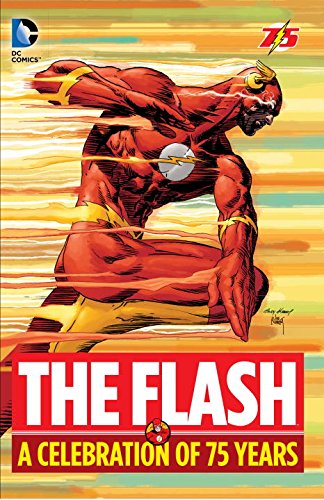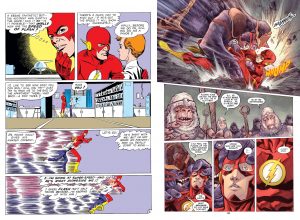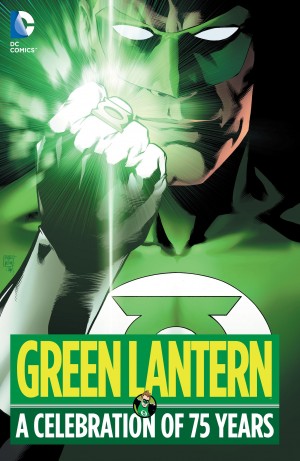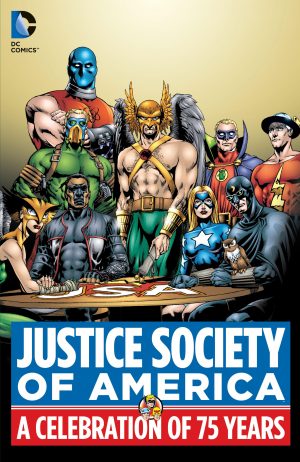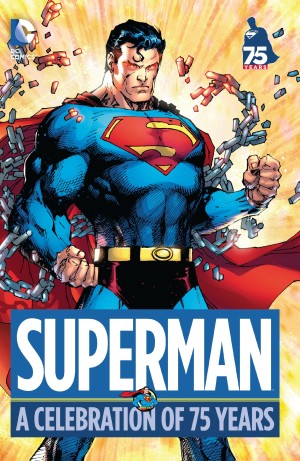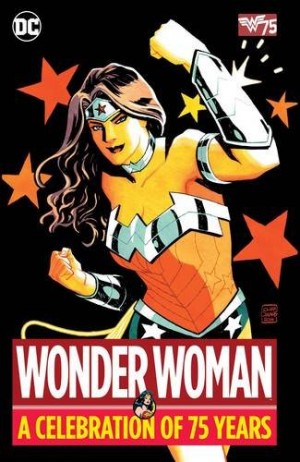Review by Frank Plowright
Most of the 75 Years anthology samplers are professionally reconstructed primers covering, as far as possible, the landmark creators, occasions and stories over that period. In the Flash’s case, however, only the bare minimum of thought or consideration has been applied, even taking into account that it’s a slightly trickier task than related collections as the Flash identity has been transferred from person to person. The result is disappointing.
Prioritising landmarks has a definite impact on overall quality, as original origin stories rarely number among series highlights, and three are included, covering each of the long-running Flashes. That’s in addition to several other tales tinkering with or revising origins, which leads to considerable repetition. Another odd choice is to include the introductory issue of numerous series when later material better represents the creators and their approach. The major mis-step is to diminish the importance of Flash’s Rogues Gallery, his colourful and inventive foes. Professor Zoom features in three stories, with similarities to their plots, and the revised 21st century version of Gorilla Grodd in one. The remainder of the villains are restricted to being united in one late 1960s tale and brief cameos elsewhere, which in almost five hundred pages is definitely short changing them.
Another restriction is limiting the content as much as possible to standalone material, which serves the older stories well, but doesn’t always give the correct impression of more recent writers. Mark Waid suffers in particular, having rescued the Flash from mediocrity in the 1990s with a series of compelling multi-part dramas, yet confined here to a slight single issue. Neither is Cary Bates well represented by a story with a cliffhanger ending with no conclusion included when he wrote plenty of perfectly serviceable independent episodes. It’s not the only occasion of an absent continuation, and irritating given the large page count and the numerous other options. Geoff Johns, at least, does get his due.
As might be expected, the 1940s material is primitive by today’s standards, and while having more sophisticated plots, the 1960s and 1970s stories are dated by the almost entire lack of characterisation. Several of these have the art of Carmine Infantino (sample art left) as compensation. His elegance, imaginative page designs and wonderful backgrounds now have a retro look when once they were resolutely modern, but the class shines through, and his is among the most attractive art here. Too much else lacks style or individuality. Andy Kubert and George Pérez also shine, and Curt Swan is good, if not ideally suited to the Flash, although to be fair to him, the Flash racing against Superman occurred in a Superman comic. Francis Manapul’s work (sample art right) is also noteworthy on the most recent material featured (from 2012), very design led, so imaginative, but with strong storytelling and good visual effects.
Some stories were almost compulsory, and they’re here. The Flash meeting his 1940s counterpart in ‘Flash of Two Worlds’, Barry Allen’s 1980s death in Crisis on Infinite Earths, and the final chapter of the world redefining Flashpoint, but this anthology could have been so much better and more representative with very little more thought. The idle editorial work results in a great shame.
